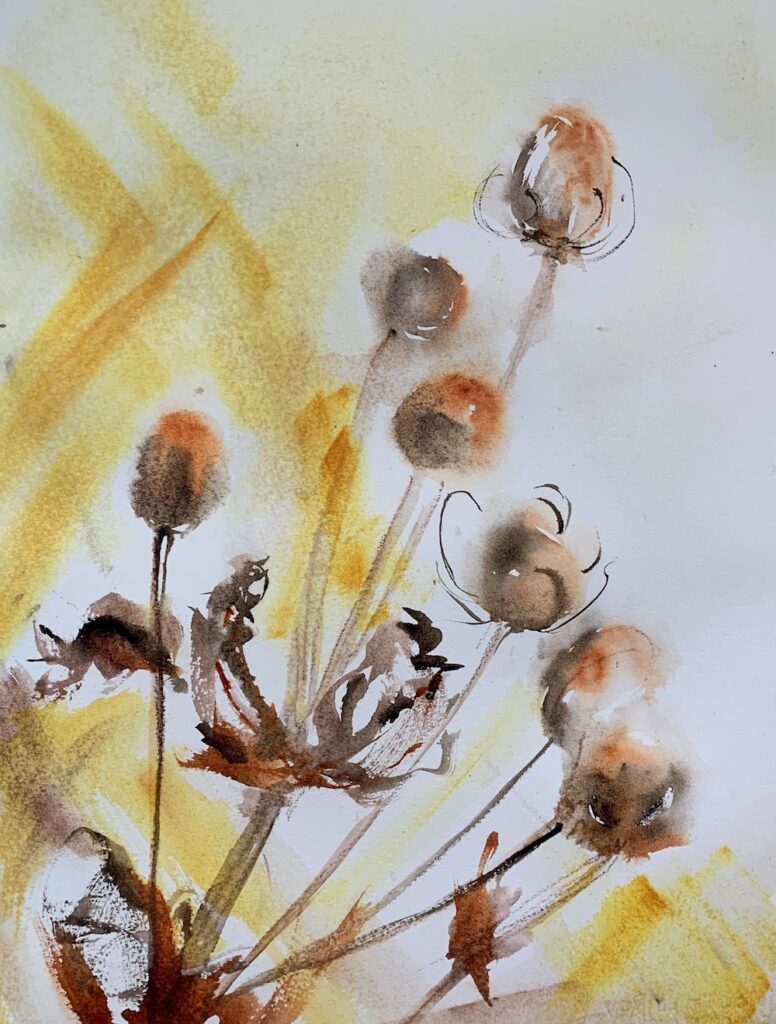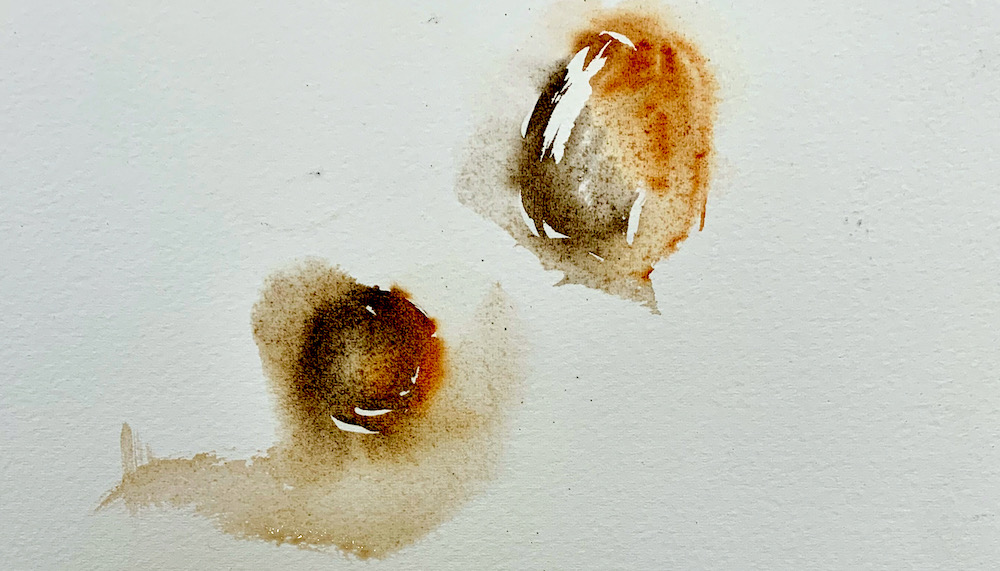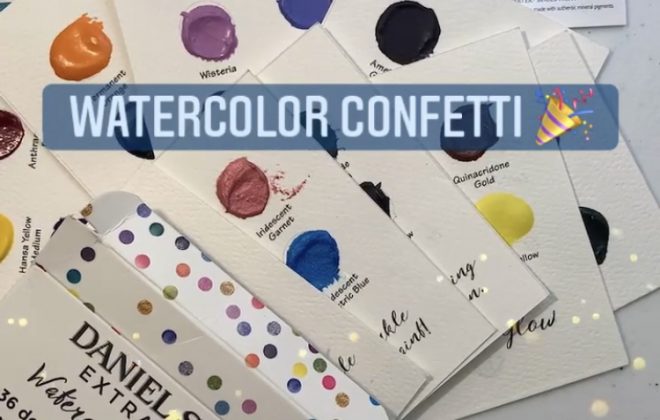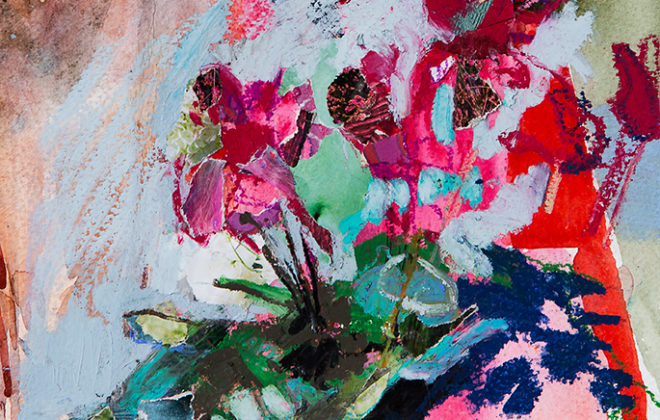When a painting goes wrong
When a painting goes wrong, decisions have to be made. If we expect that every time we put brush to paper we will produce a masterpiece, we are going to be disappointed. The ratio of good paintings to sheets of paper used is surprisingly low. Between experimenting, preparatory sketches, and outright failures, I would estimate that for every pristine piece of paper placed on a worktop or an easel, only 10% end up as paintings worth framing.
(As an aside, this is what a customer is paying for when they buy a painting. It’s not just the piece of paper and paints that they will take home. It’s the many sheets of paper and hours of skill development that went before it as well.)
I’ve decided to share a few more stories of the paintings that went wrong. If the following story sounds like something you’ve experienced, then know that you’re not alone. There are many reasons a painting might fail. This is just one of them.
Where it started
I was gifted a pile of boards by an artist friend when she stopped painting. She thought they would be useful for my workshops – and she was right. Her generous offer was gratefully received. I noticed that one had a piece of unused watercolour paper still taped to it so when I felt the urge to paint some dried teasels that stand in the corner of my studio, I thought I would use it.
The first brushstrokes were exactly what I wanted. Crisp, clean edges with expressive marks describing the shape of a teasel head. There was a bit of softening around one edge and I was happy with that.
But as I worked on other teasel heads I noticed that the pigment wasn’t flowing in the areas where I wanted a diffused glow. I started to realise there might be a problem with the paper.

So I loaded water on the background and swept some quinacridone gold across the background in bold strokes. Normally, I would expect the colour to move swiftly across the surface of the paper. That would allow me to move the pigment around to where I want it to settle and produce a soft background glow. Instead, each brushstroke just sank straight into the paper, leaving the mark of its passage emblazoned across the sheet.
Not only was the paint lacking its usual flow, but I could also see that it was dull and flat. The usual translucence of watercolour was absent. That’s when I concluded that the sizing of the paper wasn’t working.
When a painting goes wrong: Time to step back.
At this stage, I could have tried to resolve this as a watercolour but the final result would not be what I wanted. I know I would always be disappointed in the end result.
At this stage, it is time to stop and take stock. I’ve not continued with this piece yet, but I know I have a few options:
I could:
- Add more watercolour and use sections of the paper for collage
- Change the surface by painting gesso over the sheet and use it for mixed media, allowing some sections of the existing paint to show through
- Try using ink instead of watercolour to see whether the result would be more satisfying on this paper.
- And I’m sure I will think of a few more options
So much of painting is problem-solving. That’s part of its challenge and its joy.
It is also why I am such a strong advocate of experimenting as much as you can. Every failed painting and every experiment helps you learn how to use your materials. So, when a painting goes wrong you have a range of options in your artistic toolkit.
I haven’t quite decided which of these options to choose yet, and I may well come up with something completely different. What would you do?
Each painting is just an experience that is either successful or not according to our perception. But in reality they are all successes because even if they don’t work, they are learning curves.
Lori Bentley
I hope you found this a helpful way of thinking about paintings that go in unexpected directions.
If you’d like to see more of my work, you can find me on Instagram
Whatever else happens, remember to just have fun with your painting.
Share this:
Related Posts
Leave a Reply
Recent Posts
Recent Comments
- vandy on From pulp to perfection: The art of making watercolour paper
- What Is Watercolor Paper? | Print Wiki on From pulp to perfection: The art of making watercolour paper
- Jessica on Cleaning Used Acrylic Painting Water
- vandy on What my art taught me about myself
- Terri Webster on What my art taught me about myself
Archives
- July 2025
- October 2024
- May 2024
- March 2024
- January 2024
- October 2023
- May 2023
- January 2023
- December 2022
- November 2022
- October 2022
- September 2022
- September 2021
- July 2021
- June 2021
- May 2021
- April 2021
- March 2021
- February 2021
- January 2021
- December 2020
- November 2020
- October 2020
- September 2020
- August 2020
- July 2020
- June 2020
- April 2020
- March 2020
- December 2019
- November 2019
- October 2019




